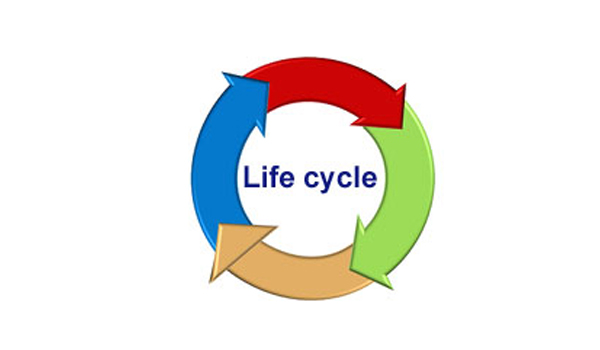Find Best Product Lifecycle Management Software for Your Business
We help you find the right Product Lifecycle Management Software for your business.

Browse Popular Product Lifecycle Management Software
Up-to-date listing of Product Lifecycle Management Software to assist you throughout your software selection and purchase journey.
Product Lifecycle Management Software
Explore best Product Lifecycle Management Software for your business.
Product Lifecycle Management Software:
Product Lifecycle Management Software is a software that is used to manage data during the development of a product from inception through the manufacturing, servicing, and disposal processes.
PLM software can be used by companies to increase productivity and collaboration, improve quality, bolster creativity, and shorten time to market for a product.
Product Lifecycle Management is the process which is used to manage the complete lifecycle of a product, from the start to the end .
Types of Product Lifecycle Management (PLM) software
- Product Data Management (PDM) Software
- Product Design and Development Software
- Product Portfolio Management (PPM) Software
- Quality Management Software
- Supply Chain Management (SCM) Software
- Manufacturing Process Management (MPM) Software
- Product Costing and Profitability Software
- Product Compliance and Regulatory Software
- Service Lifecycle Management (SLM) Software
- Collaboration and Communication Software
Features of Product Lifecycle Management Software:
Data Integration: PLM software seamlessly integrates data, documents, business systems, and team members involved in product development across various industries.
Change Tracking: Systematically tracks all changes a product undergoes during its development lifecycle.
Integration Flexibility: Offers integration capabilities with a variety of systems, including ERP systems and CAD software.
Multi-User Support: Accommodates multiple users within an organization, each with varying roles and permissions.
Centralized Data Management: Provides a centralized hub for managing product data throughout its lifecycle.
Enhanced Productivity: Increases product output, enhances product quality, and accelerates the entire development process.
Automation Tools: Incorporates automation tools to streamline processes and boost efficiency.
Revenue Growth: Contributes to revenue growth through centralized data management.
Real-Time Access: Offers real-time access to product data presented graphically for quick interpretation.
Data Security: Ensures context, security, traceability, and streamlined processes for accessible and trustworthy product data.
Automated Workflows: Automates product development processes across all departments and locations, ensuring timely information delivery.
Cloud-Based: Being on the cloud, it grants everyone access to the required data anytime, anywhere, fostering collaboration.
Process Automation: Defines and automates processes to maintain workflow and keep product development on track.
Change Management: Provides modern change management tools to track and record product design changes as they occur.
Transparency and Collaboration: Enables collaborative and transparent product development from requirements to release with full traceability, reducing time-to-market.
Quality Tracking: Tracks non-conformance identification and analysis, RMA (Return Merchandise Authorization), and CAPA (Corrective and Preventive Action) in one closed-loop system. Facilitates instant access to quality records and product development history.
Collaborative Cloud Environment: Eliminates manual processes like email and file sharing, promoting secure collaboration with customers and suppliers in a cloud-based PLM system.
Regulatory Compliance: Enforces regulatory compliance to meet complex domestic and international safety requirements.
Configurability: Built on a highly configurable interface, allowing easy adaptation to existing processes and environments.
Program Management: Manages phase-gate projects, associated documents, task/deliverable flow-downs, and reminders on mobile devices, ensuring flawless execution and on-time delivery.
PPAP Validation: Automates the validation of PPAP deliverables, including revision-controlled documentation, and allows electronic submission to customers ahead of schedule.
Design and Manufacturing Robustness: Ensures robust product design and manufacturing by linking design and process Failure Modes and Effects Analysis (FMEA) to components and integrating them with the Change Management process.
Continuous Improvement: Gathers and analyzes metrics through real-time reports to enable continuous process improvement.
Benefits of Product Lifecycle Management Software:
Efficient Collaboration: Facilitates efficient collaboration among teams, improving overall productivity.
Streamlined Workflows: Streamlines workflows, reducing manual processes and delays.
Data Accuracy: Ensures data accuracy and consistency throughout the product development lifecycle.
Cost Savings: Reduces costs associated with rework, errors, and manual tasks.
Enhanced Compliance: Helps maintain regulatory compliance, avoiding costly penalties.
Improved Product Quality: Enhances product quality by identifying and addressing issues promptly.
Faster Time-to-Market: Accelerates product development, enabling faster time-to-market.
Secure Data Handling: Provides robust security measures for sensitive product data.
Greater Visibility: Offers real-time insights into the product development process for better decision-making.
Customer Satisfaction: Delivers high-quality products, improving customer satisfaction and loyalty.
Adaptability: Adapts to existing processes and can evolve with changing business needs.
Mobile Accessibility: Enables on-the-go program management and access to critical data.
Automation Benefits: Automates processes, reducing manual effort and potential errors.
Traceability: Provides full traceability of product changes and quality control measures.
Data Centralization: Centralizes product data management for easy access and control.
Revenue Growth: Contributes to revenue growth by optimizing product development processes.
Quick Decision-Making: Empowers quick decision-making through graphical data representation.
Resource Optimization: Optimizes resource utilization, improving operational efficiency.
Risk Reduction: Minimizes risks associated with product development.
Efficiency Boost: Boosts efficiency through automated workflows and task management.
Improved Customer Relations: Enhances customer relationships by delivering high-quality products on time.
Innovation Acceleration: Speeds up innovation to gain a competitive edge.
Continuous Enhancement: Supports continuous process improvement through data analytics.


